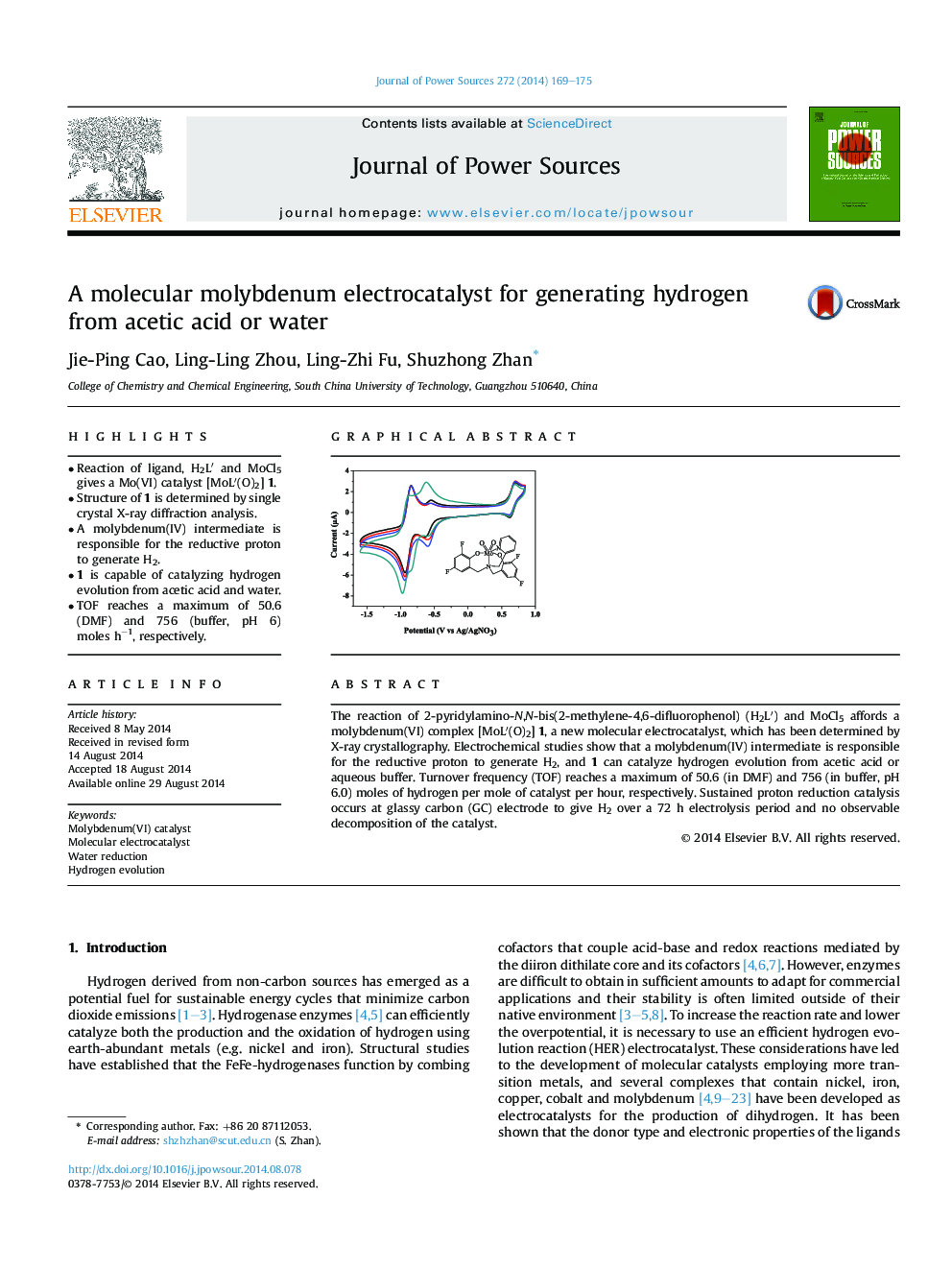| Article ID | Journal | Published Year | Pages | File Type |
|---|---|---|---|---|
| 1283975 | Journal of Power Sources | 2014 | 7 Pages |
•Reaction of ligand, H2L′ and MoCl5 gives a Mo(VI) catalyst [MoL′(O)2] 1.•Structure of 1 is determined by single crystal X-ray diffraction analysis.•A molybdenum(IV) intermediate is responsible for the reductive proton to generate H2.•1 is capable of catalyzing hydrogen evolution from acetic acid and water.•TOF reaches a maximum of 50.6 (DMF) and 756 (buffer, pH 6) moles h−1, respectively.
The reaction of 2-pyridylamino-N,N-bis(2-methylene-4,6-difluorophenol) (H2L′) and MoCl5 affords a molybdenum(VI) complex [MoL′(O)2] 1, a new molecular electrocatalyst, which has been determined by X-ray crystallography. Electrochemical studies show that a molybdenum(IV) intermediate is responsible for the reductive proton to generate H2, and 1 can catalyze hydrogen evolution from acetic acid or aqueous buffer. Turnover frequency (TOF) reaches a maximum of 50.6 (in DMF) and 756 (in buffer, pH 6.0) moles of hydrogen per mole of catalyst per hour, respectively. Sustained proton reduction catalysis occurs at glassy carbon (GC) electrode to give H2 over a 72 h electrolysis period and no observable decomposition of the catalyst.
Graphical abstractFigure optionsDownload full-size imageDownload as PowerPoint slide
